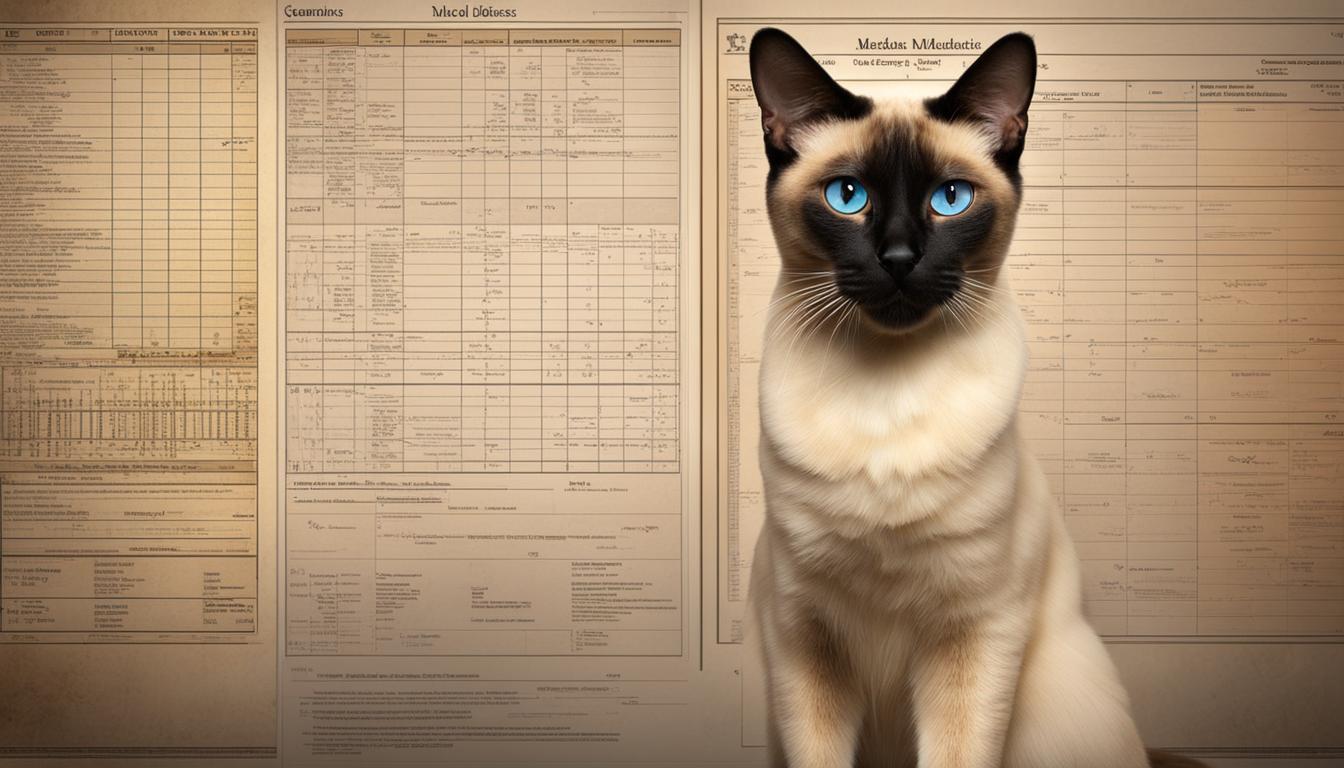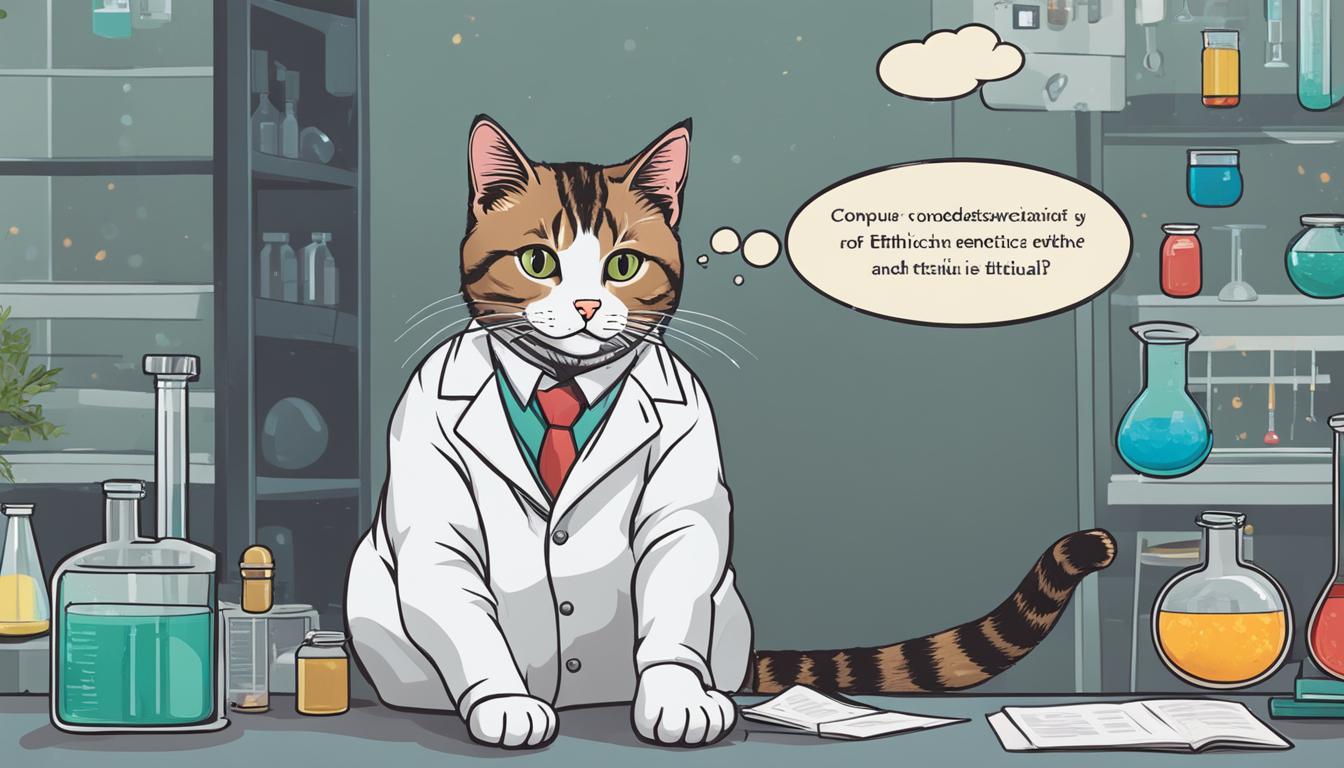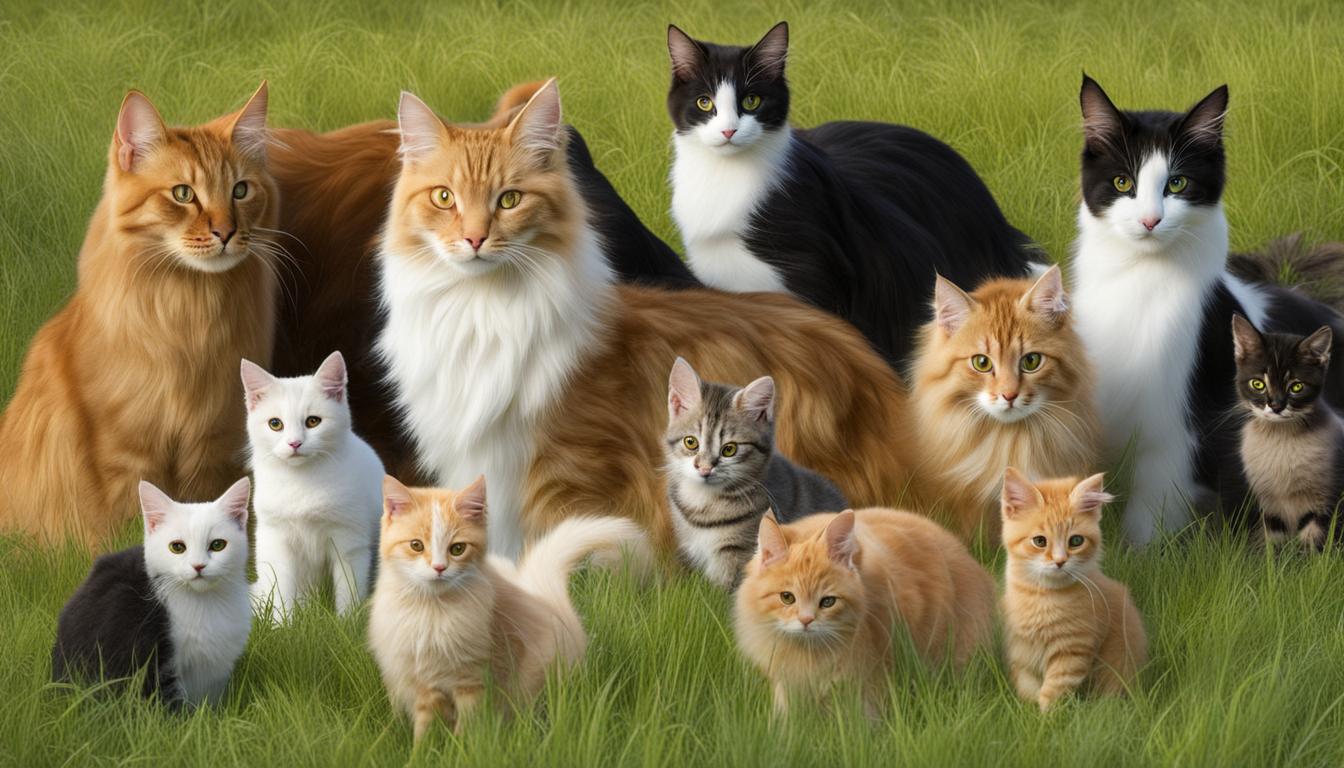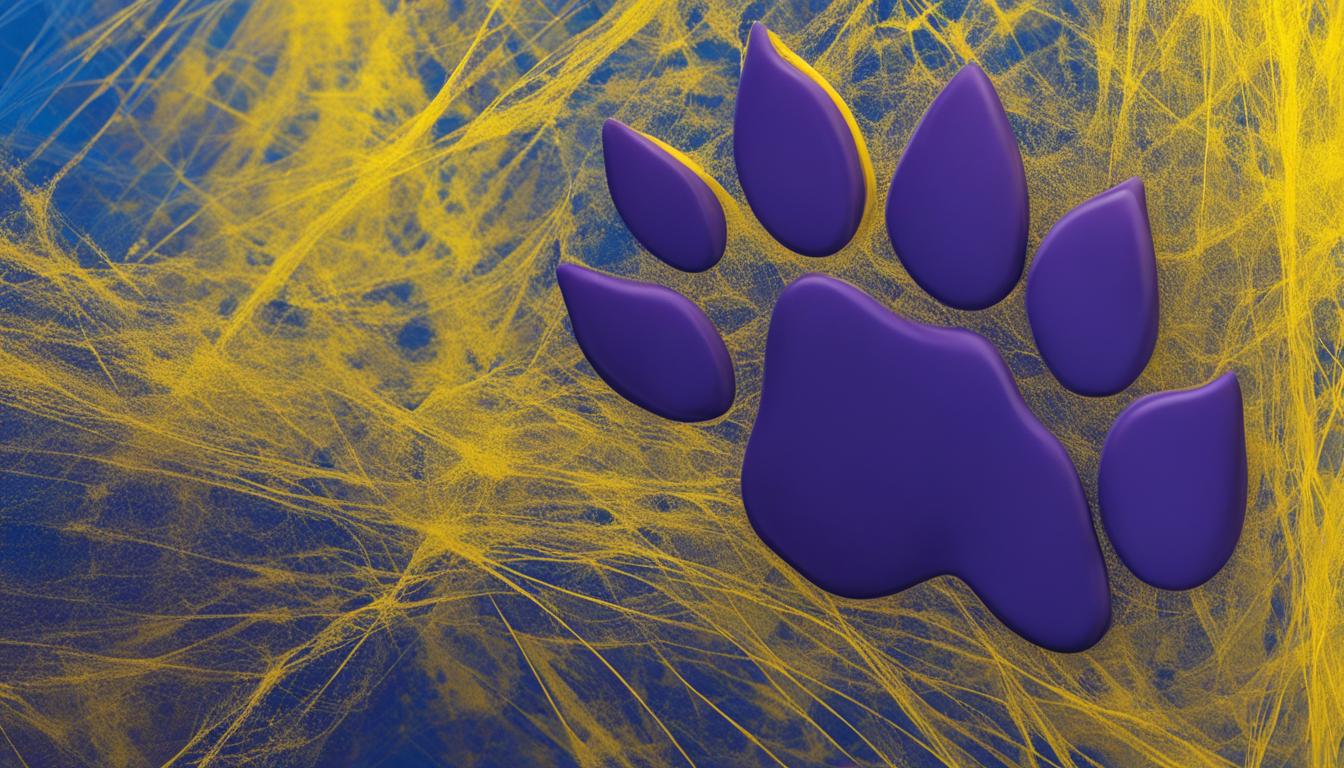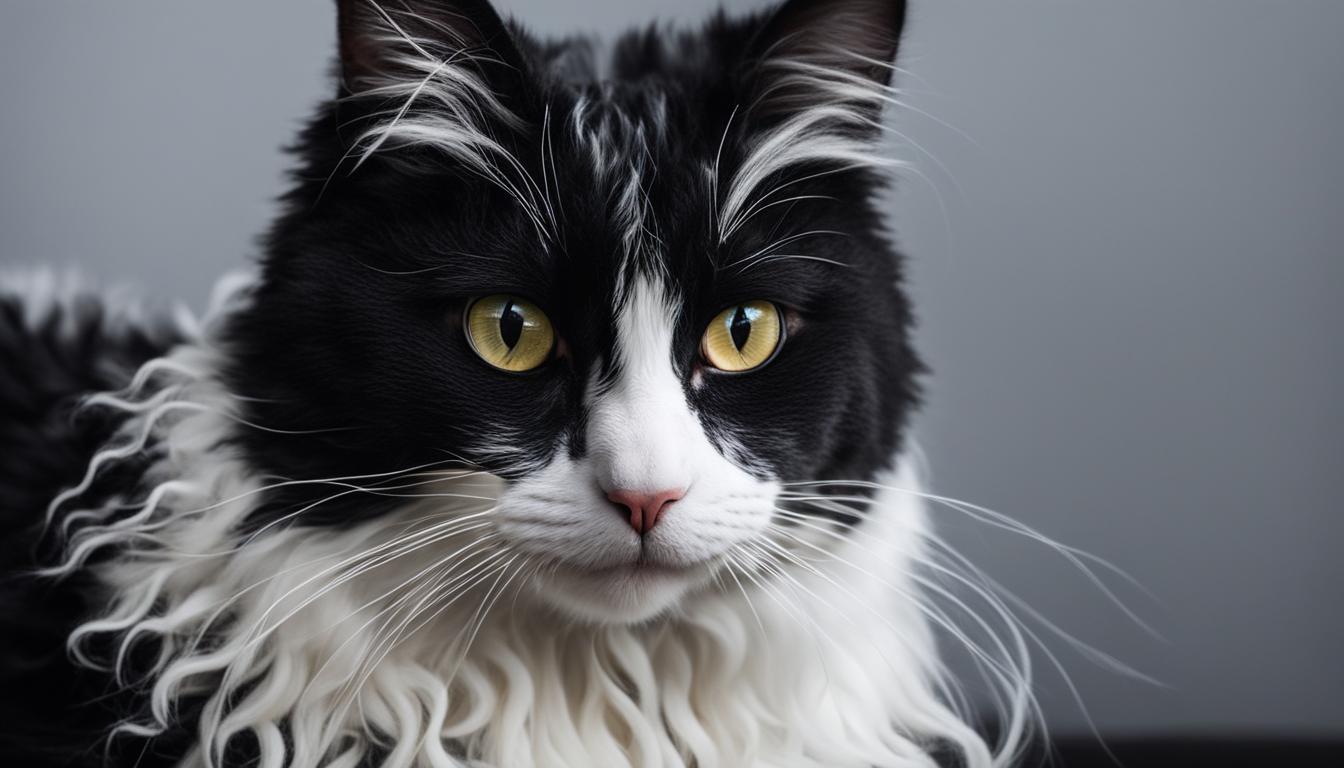Curiosity piqued and not a whisker out of place, I delve into the fascinating realm of feline genetics. Today, I bring you the captivating tale of breed-specific genetic diseases in our beloved cats. As we explore the intricate genetic landscape, we’ll uncover the hidden risks and the role of selective breeding in shaping feline health. So, grab your favorite feline companion and let’s embark on a journey of discovery!
Ah, the diverse world of feline genetics, where the code of life weaves its enigmatic patterns, sometimes giving rise to potential health risks. Purebred cats, with their ancestry carefully traced through generations, can harbor genetic predispositions that make them more susceptible to certain diseases. The very essence of selective breeding, aimed at preserving specific traits, can inadvertently perpetuate these genetic health risks.
Key Takeaways:
- Breed-specific genetic diseases in cats result from selective breeding and in-breeding practices.
- Genetic testing helps identify gene defects associated with inherited conditions.
- Inbreeding increases the risk of inherited disorders in cats.
- Breed-specific genetic diseases can be controlled through DNA testing and responsible breeding practices.
- Surveillance and testing aid in identifying higher frequencies of certain diseases in specific cat breeds.
The Role of Inbreeding in Genetic Diseases
Inbreeding is a common practice in pedigree cat breeds, used to fix certain traits and characteristics. While it can be advantageous in maintaining breed standards, it also comes with a significant risk of inherited defects and health problems. Inherited diseases can occur in both pedigree and non-pedigree cats, but the risk is higher in pedigree cats due to their more restricted gene pool.
Some breeds are more predisposed to inherited diseases than others, primarily because of the level of inbreeding within the breed. Breeding for specific traits can inadvertently lead to the accumulation of harmful gene mutations. These mutations can result in a variety of health issues, ranging from mild conditions to severe, life-threatening diseases.
“Inbreeding, while designed to preserve certain desirable traits, can inadvertently amplify existing genetic defects. This can lead to the manifestation of hereditary health problems in cat breeds,” explains Dr. Emily Johnson, a renowned veterinary geneticist.
“It is crucial for breeders to prioritize genetic health and diversity to minimize the risk of inherited diseases in their feline populations.”
| Breed | Common Genetic Disorder |
|---|---|
| Persian Cats | Polycystic Kidney Disease (PKD) |
| Maine Coon Cats | Hypertrophic Cardiomyopathy (HCM) |
| Abyssinian Cats | Progressive Retinal Atrophy (PRA) |
“Genetic disorders in popular cat breeds are not always immediately apparent. It is essential for breeders and cat owners alike to prioritize genetic testing to identify potential health risks,” advises Dr. Johnson.
“By understanding the role of inbreeding in genetic diseases and taking proactive steps to mitigate these risks, we can ensure healthier and happier feline populations.”

In conclusion, inbreeding in cat breeds can significantly impact the prevalence of inherited diseases. Genetic disorders are more common in certain popular breeds due to the accumulation of harmful gene mutations through selective breeding practices. Recognizing the role of inbreeding in genetic diseases is crucial in promoting responsible breeding practices and safeguarding the health of our feline companions.
Controlling Inherited Diseases Through Genetic Testing
Genetic testing is a powerful tool in the fight against inherited diseases in cats. Through DNA testing, it is possible to identify gene defects associated with specific conditions, enabling early detection and intervention. This has significant implications for breeding programs and the overall health of cat populations.
One example of the success of genetic testing is in the case of polycystic kidney disease (PKD) in Persian cats. By identifying the genetic mutation responsible for PKD, breeders can use DNA testing to ensure that affected cats are not used for breeding. This has led to a significant decrease in the prevalence of PKD in Persian cats and has been hailed as a major breakthrough in feline genetics.
“Genetic testing has revolutionized our ability to control inherited diseases in cats. By identifying the underlying genetic mutations, we can make informed decisions about breeding and reduce the prevalence of these conditions in future generations,” says Dr. Emily Johnson, a feline geneticist.
Genetic testing should be done under the supervision of a veterinarian, as it involves collecting a DNA sample from the cat and sending it to a specialized laboratory for analysis. Test results should be linked to a method of permanent identification for the cat, such as a microchip or a unique identification number, to ensure accurate record-keeping and pedigree verification.
| Genetic Testing for Common Cat Diseases | Disease | Testing Method |
|---|---|---|
| Polycystic Kidney Disease (PKD) | PKD1 gene mutation | DNA testing |
| Hypertrophic Cardiomyopathy (HCM) | MyBPC3 gene mutation | DNA testing |
| Progressive Retinal Atrophy (PRA) | Various gene mutations | DNA testing |
By utilizing genetic testing for breeding programs, breeders can make informed decisions about which cats to introduce into their breeding lines, reducing the risk of passing on inherited diseases. This helps ensure healthier future generations of cats and promotes responsible breeding practices.
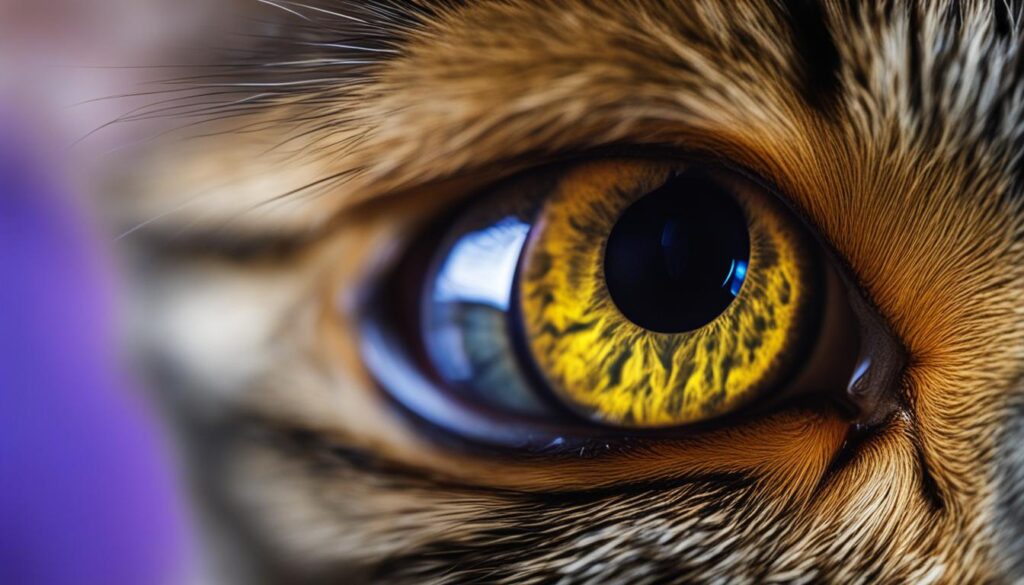
Cat Breeds Prone to Specific Diseases
When it comes to inherited disorders, certain cat breeds are more susceptible to specific diseases. These breed-specific genetic predispositions highlight the importance of responsible breeding practices and genetic testing. By understanding the common diseases in specific cat breeds, breeders and owners can take proactive measures to minimize the risk of hereditary ailments in their feline companions.
Table: Common Inherited Disorders in Cat Breeds
| Cat Breed | Common Inherited Disorder |
|---|---|
| Persian | Polycystic Kidney Disease |
| Maine Coon | Hypertrophic Cardiomyopathy |
| Abyssinian | Progressive Retinal Atrophy |
The Persian breed is prone to polycystic kidney disease (PKD), a condition where fluid-filled cysts form in the kidneys. PKD has a strong genetic component, and responsible breeders perform DNA testing to identify carriers before breeding. Maine Coon cats, on the other hand, have a higher risk of developing hypertrophic cardiomyopathy (HCM), a disease that causes thickening of the heart muscle. Regular cardiac screenings and genetic testing can help breeders make informed decisions to reduce the prevalence of HCM in the breed. As for Abyssinian cats, they are more susceptible to progressive retinal atrophy (PRA), an inherited eye disorder that leads to vision loss. Genetic testing plays a crucial role in identifying carriers and preventing the transmission of PRA.
It’s important to note that while these are examples of common inherited disorders in specific cat breeds, genetics can play a role in various health conditions across different breeds. Each breed may have its own unique set of genetic predispositions, and ongoing research and genetic testing continue to uncover new insights into the impact of genetics on feline health.
By being aware of the breed-specific genetic diseases and working with reputable breeders, cat owners can ensure the well-being of their beloved companions. Genetic testing and responsible breeding practices are vital tools in reducing the prevalence of inherited disorders and promoting the overall health and longevity of cat breeds.
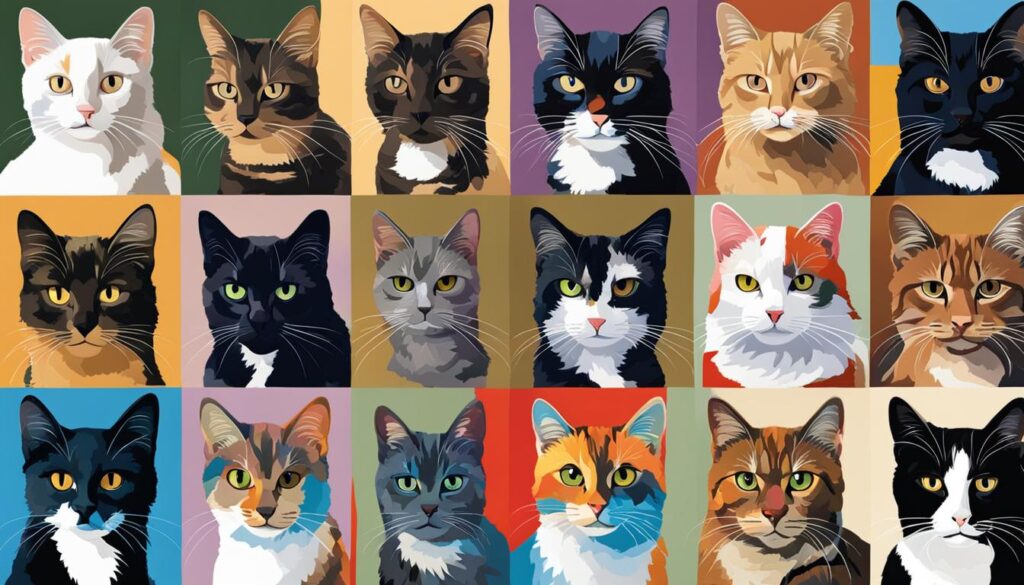
The Impact of Genetics in Cat Breeds
Genetic predispositions play a significant role in the development of certain diseases in cats. Some breeds have a higher susceptibility to specific illnesses, highlighting the underlying genetic component in these cases. While genetic testing has identified disease-causing mutations in certain breeds, there are still many diseases with breed predispositions where the causative genes remain undiscovered.
One area where genetic factors have a noticeable impact is in eye disorders. Certain cat breeds are more prone to hereditary eye conditions, such as progressive retinal atrophy. This condition leads to the progressive degeneration of the retina and can result in blindness. Identifying the genes responsible for these eye disorders can help breeders make informed decisions and work towards reducing the incidence of such conditions in affected breeds.
| Breed | Common Hereditary Eye Disorders |
|---|---|
| Persian | Progressive Retinal Atrophy, Eyelid Agenesis |
| Abyssinian | Retinal Degeneration, Iris Hypoplasia |
| Maine Coon | Retinal Dysplasia, Congenital Cataracts |
It is crucial for breeders and cat owners to be aware of these genetic predispositions and take appropriate measures to minimize the risk of hereditary diseases. Genetic testing can provide valuable insights into the health status of breeding cats and help in making informed decisions to reduce the prevalence of these diseases in the future generations.
While genetics certainly have a significant impact on the health of cat breeds, it is important to note that environmental factors and proper healthcare also play crucial roles. Regular veterinary check-ups, appropriate vaccinations, and a well-balanced diet are essential components of overall feline health, regardless of breed predispositions.

Conclusion
As I wrap up this exploration of breed-specific genetic diseases in certain cat breeds, it becomes clear that genetic factors play a significant role in the health of our feline friends. The selective breeding and in-breeding practices used to establish specific traits in pedigree cats have inadvertently increased the risk of inherited disorders. However, genetic testing has opened the door to identifying gene defects associated with these conditions and developing diagnostic tests.
Controlling inherited diseases is not an insurmountable task. With DNA testing and responsible breeding practices, we can make significant strides in reducing the prevalence of breed-specific genetic diseases. For instance, in Persian cats, DNA testing for polycystic kidney disease has already made a notable impact on disease frequency. It is important, though, to always consult with a veterinarian and ensure test results are linked to a permanent identification method for each cat.
It’s crucial to acknowledge that while some inherited disorders have been successfully controlled, there are still many breed-specific diseases where the causative genes remain undiscovered. Genetic predispositions to certain ailments, be it eye disorders, heart defects, or metabolic diseases, continue to pose challenges in maintaining the health and well-being of different cat breeds. By implementing responsible breeding practices and DNA testing, we can better address these concerns and mitigate the risk of inherited diseases in cat populations.
FAQ
Are genetic diseases more common in pedigree cats?
Yes, genetic diseases are more common in pedigree cats due to selective breeding and in-breeding practices.
How has genetic testing helped in identifying inherited conditions in cats?
Genetic testing has allowed the identification of gene defects associated with inherited conditions and the development of diagnostic tests.
Does inbreeding increase the risk of inherited defects?
Yes, inbreeding increases the risk of inherited defects in cats.
Do some cat breeds have a higher frequency of inherited diseases?
Yes, some cat breeds may have a higher frequency of inherited diseases due to more widespread surveillance and testing.
Can breed-specific genetic diseases be controlled?
Yes, breed-specific genetic diseases can be controlled through DNA testing and responsible breeding practices.

